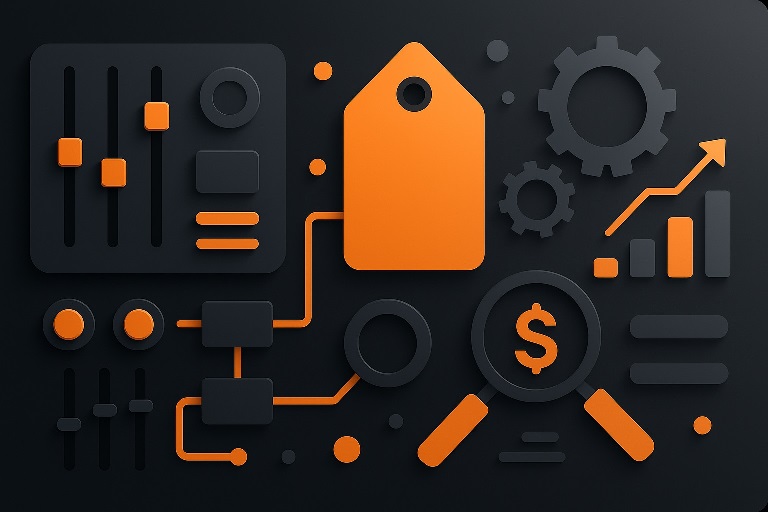
If you’re trying to pin down the price of 493xds5.0 software, you’ve probably noticed something frustrating: there isn’t a single, official public price tag. Different third-party write-ups mention very different numbers and tiers, and many of them don’t link to a vendor pricing page. In other words, public figures are inconsistent and should be treated as estimates rather than definitive pricing.
Below is a clear, practical guide to help you understand what drives the cost, how to budget accurately, and how to negotiate a fair quote—without relying on guesswork.
Why You Don’t See a Single Public Price
Some software vendors publish list prices; others gate pricing behind a sales call. From publicly available articles discussing 493xds5.0, there’s no authoritative vendor page with an official rate, and the numbers conflict across sources (which cite different plan names and price bands). That’s a strong hint the product is quote-based and varies by use case, user count, and support level.
What Actually Determines Your 493xds5.0 Cost

1) License Model
- Per-user: Charges by seat. Good for teams that will grow gradually.
- Per-feature (modular): Core platform plus paid add-ons. Predictable if you only need a few modules.
- Usage-based: You pay for consumption (e.g., tasks processed, API calls). Efficient when usage fluctuates.
- Enterprise contract: Custom pricing for larger deployments (longer terms, SLAs, compliance).
Tip: Ask whether you can mix models (e.g., per-user base + usage add-on) so you’re not overpaying for uneven workloads.
2) Number and Type of Users
Costs scale with named users, concurrent users, or workspaces. Clarify if occasional participants (e.g., viewers, requesters) require full licenses or if there’s a read-only or requester role at a lower cost.
3) Feature Set & Add-Ons
Most quote-based tools separate core capabilities from advanced modules (automation, integrations, audit/compliance, premium analytics). Your total goes up as you stack modules.
4) Environment & Deployment
- Cloud (multi-tenant) is typically cheaper to start.
- Private cloud / on-prem often involves infrastructure, security reviews, and custom deployment—and is priced accordingly.
5) Support & SLA
Standard business-hours support is often included; 24/7, dedicated CSM, faster SLAs, or onboarding services may be premium line items.
6) Data Volume & Integrations
Large data retention windows, high event throughput, and third-party connectors can trigger higher tiers or usage bands.
7) Contract Length & Commit Level
Longer terms (annual/multi-year) and prepaid commitments usually unlock discounts. Month-to-month is flexible but often pricier.
A Reliable Way to Build a Realistic Budget (Without Guessing)

Step 1: Map Your Minimum Viable Scope
List the must-have users and must-have features you’ll need within the first 90 days. Keep “nice-to-haves” separate so you can compare quotes apples-to-apples.
Step 2: Estimate Consumption
Even if pricing is user-based, ask how usage (runs, workflows, API calls, data retention) could bump you into a higher tier. Request example invoices or sample calculations based on your volumes.
Step 3: Ask for Three Quote Variants
- Starter (must-haves only)
- Standard (plus the features you expect to add in 6–12 months)
- Stretch (everything, but with transparent line items)
This forces clarity on unit economics and avoids surprises later.
Step 4: Price-Protect Your Growth
Negotiate:
- Rate cards for incremental seats/add-ons
- Usage ceilings with alerts before overages
- Renewal caps (% increase limits)
- Carry-over or true-up terms if usage fluctuates seasonally
Step 5: Validate Public Numbers Carefully
Some blogs present starting prices or tier ranges, but they vary widely and may be outdated or speculative. Treat them as context only, not decision-making data.
Also Read: Playing Games on Blog Playbattlesquare: The Tech Behind It
Calculating Total Cost of Ownership (TCO)
A smart budget looks beyond license fees. Include:
- Licenses & add-ons: Seats, modules, usage blocks.
- Onboarding & training: Admin setup, workflow design, enablement.
- Integration work: Connectors, custom scripts, middleware.
- Change management: Internal documentation, champions, office hours.
- Security & compliance: Reviews, penetration testing (if required in your environment).
- Ops & maintenance: Monitoring, backups, data lifecycle policies.
- Contingency: 10–15% buffer for unplanned usage or new modules.
Rule of thumb: For new platforms, the first-year TCO can be 1.2×–2× the annual license, depending on rollout complexity. Use your own hourly rates and project plan to ground this.
How to Get the Best Possible Quote
Be Specific About Outcomes
Frame your RFP around measurable outcomes (e.g., “reduce manual triage time by 40%”) rather than generic features. Vendors price more fairly when they see clear fit.
Share Realistic Data Samples
Provide anonymized volume snapshots (events/day, workflows/month, users by role). Accurate inputs reduce “risk premiums” in the quote.
Ask for Transparent Line Items
Request a line-item quote and master rate card that includes: seat price by role, module prices, overage rates, support tiers, and integration costs.
Leverage Optionality
Parallel vendor evaluations create natural pricing pressure. If you’re set on 493xds5.0, ask for pilot credits, foundational onboarding included, or term-based discounts.
Red Flags to Watch For
- Opaque bundles with no unit prices
- Auto-scaling to higher tiers without alerts
- Mandatory multi-year with steep early-termination fees
- Overage rates that exceed list prices for the next tier
- “Unlimited” claims that quietly cap critical metrics
Bottom Line
Because there’s no official, public pricing for 493xds5.0, any numbers you find online should be considered directional rather than definitive. The true cost depends on who will use it, which modules you need, how much you’ll consume, and what level of support and compliance your organization requires. Your best move is to scope precisely, request tiered quotes with clear line items, and negotiate protections around growth and renewals. Conflicting public figures confirm that only a tailored quote will reflect your reality.
FAQs
1) Is there a free trial for 493xds5.0?
Availability of a free trial isn’t publicly standardized. Ask the vendor for a time-boxed pilot or sandbox access tied to clear success metrics.
2) Can 493xds5.0 be purchased monthly, or only annually?
Contract terms appear to be flexible by account. Request monthly, annual, and multi-year options side-by-side and compare the effective annual rate.
3) Does pricing include implementation services?
Often, onboarding and integration are separate line items. Clarify what’s included and request a fixed-fee implementation quote if scope is well defined.
4) How do I avoid surprise overages?
Negotiate usage dashboards, automated alerts, and soft caps with approval workflows before any billable overage is incurred.
5) What should be in my pricing RFP checklist?
Ask for: unit prices by role, module prices, usage metrics and thresholds, support tiers, SLA terms, renewal caps, data-retention limits, change-order process, and sample invoices.